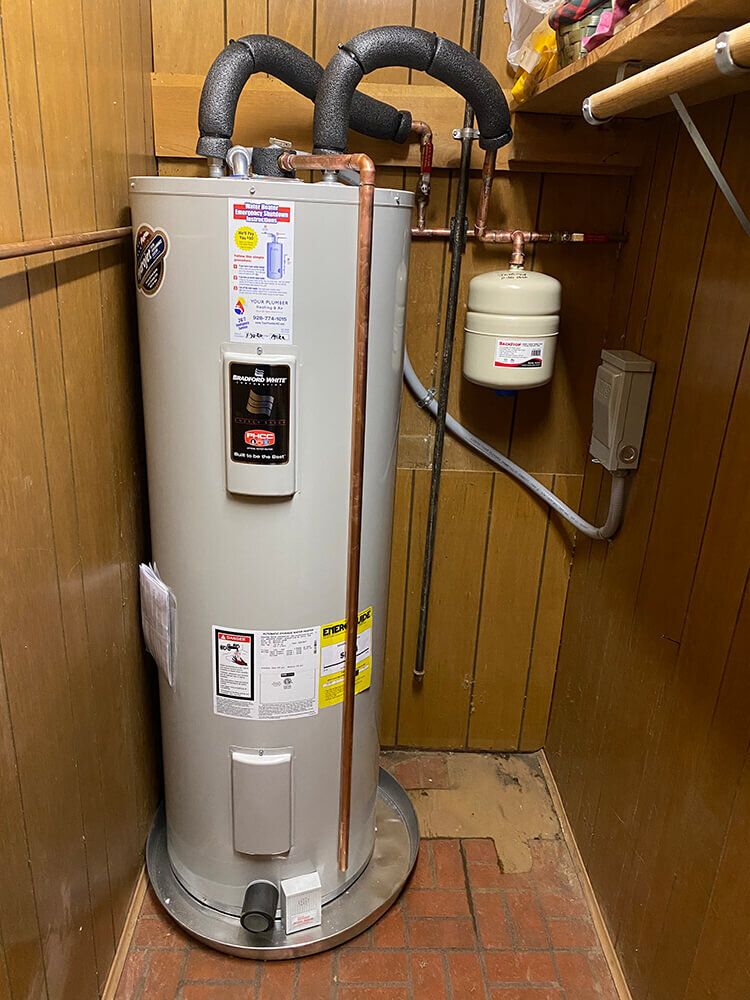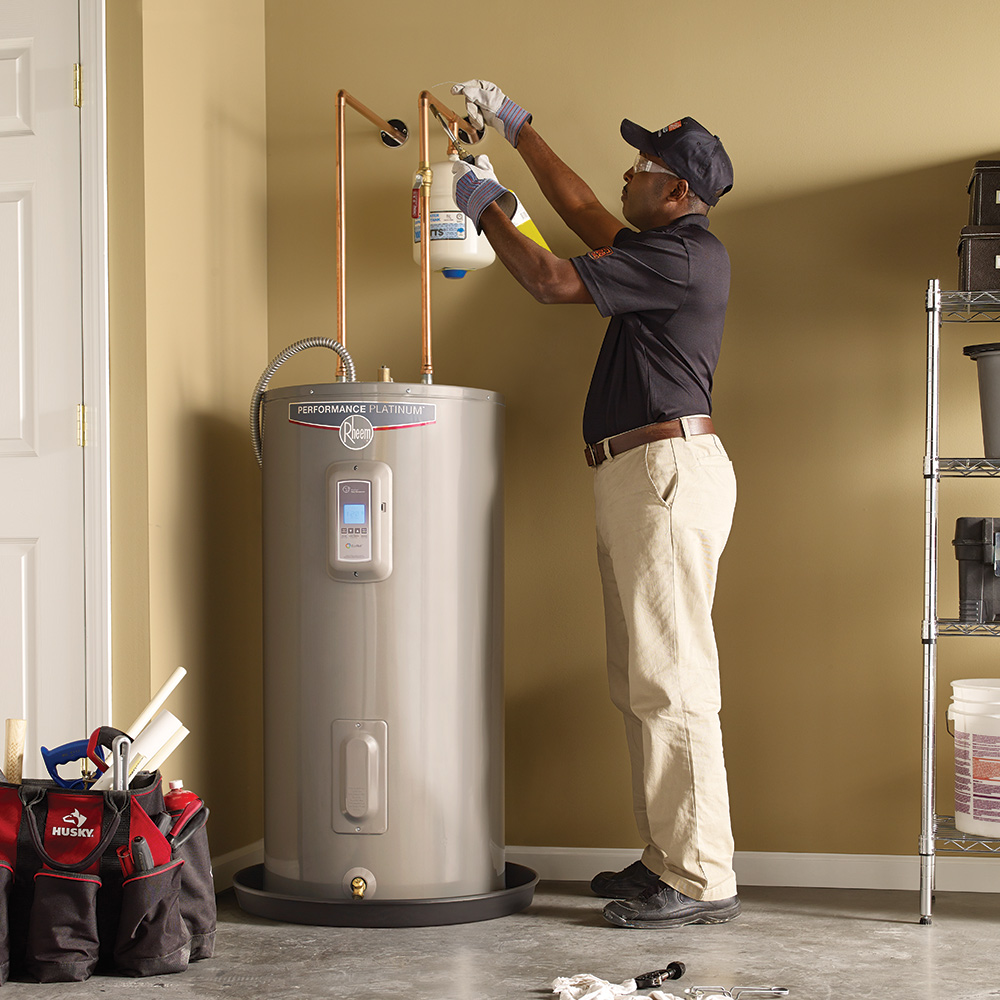Gas Leak Repair by Certified Technicians for Maximum Peace of Mind
Gas Leak Repair by Certified Technicians for Maximum Peace of Mind
Blog Article
Complete Guide to Water Heating SystemInstallation and Replacement
Comprehending the complexities of water heating unit setup and substitute is essential for house owners looking for to make certain performance and reliability in their hot water supply. From selecting the proper kind and size to executing a seamless setup process, numerous aspects should be considered to avoid typical pitfalls.
Kinds of Hot Water Heater
When thinking about hot water heater setup and substitute, it is necessary to recognize the numerous sorts of water heaters available in the market. One of the most typical kinds consist of storage tank hot water heater, tankless hot water heater, warm pump water heating systems, and solar hot water heater.
Tank water heating units are typical systems that store a details volume of hot water, making them conveniently available when required. In comparison, tankless water heating units give hot water on demand, removing the requirement for storage.
Heatpump water heating systems utilize electrical energy to transfer warmth from the air or ground to warmth water, providing considerable power financial savings yet needing even more room and specific installation problems. Solar water heating units harness solar energy to warmth water, offering an eco-friendly option with potential long-term cost financial savings, although they typically need a backup system for gloomy days.
Recognizing these alternatives makes sure notified decisions pertaining to setup and substitute, catering to certain requirements and preferences.
Picking the Right Dimension
Choosing the appropriate dimension for a water heating system is important to guarantee optimal efficiency and effectiveness. An unit that is also small will certainly have a hard time to meet household needs, resulting in inconsistent hot water schedule and boosted energy intake. Conversely, an oversized water heating system can lead to unneeded energy waste and greater utility costs.
To identify the right size, take into consideration the family's peak warm water usage. This can be determined based on the number of occupants and their common warm water requirements. For instance, a household of 4 might need a hot water heater with a capability of 50 to 80 gallons, depending on the usage patterns, such as synchronised showers and washing.
In addition, evaluate the healing price, which determines how rapidly a heating system can replenish warm water after it has actually been used. For tankless designs, concentrate on the flow rate, determined in gallons per min (GPM), to ensure it satisfies the family's synchronised need.

Installment Process Introduction

Following, the old device should be separated and eliminated, making sure to adhere to neighborhood codes and policies regarding disposal. As soon as the old unit is out, the brand-new hot water heater can be positioned in place. This action involves linking the supply of water lines, making sure that all installations are safe and leak-free.
After developing water connections, it's crucial to connect the power supply, whether electrical or gas, complying with the supplier's instructions diligently. Once all links are made, the system needs to be loaded with water, and the power can be transformed back on. Finally, it is very important to check for leaks and guarantee the water heater is working appropriately before completing the installment process.
Usual Installment Mistakes

Another regular mistake is ignoring to follow regional codes and regulations. Failing to stick to these standards can not just lead to security hazards however might also lead to pricey fines or the requirement for pricey reinstallation. Additionally, improper airing vent is a crucial problem. Poor ventilation can trigger unsafe gas accumulation, posing severe wellness risks.
Falling short to protect connections or making use of the incorrect type of installations can lead to leakages and water damage. By staying clear of these typical installment blunders, house owners can ensure their water heating system runs safely and successfully, maximizing efficiency and long life.
Upkeep Tips for Long Life
Proper upkeep of a water heating system is necessary for its longevity and ideal efficiency. Normal examinations and servicing can protect against expensive repairs and prolong the home appliance's life expectancy. Begin by checking the temperature setup; it needs to commonly be set in between 120 ° F and 140 ° F for optimal power efficiency and safety and security.
Every 6 months, flush the container to eliminate debris buildup, which can hinder home heating effectiveness and trigger deterioration. To do this, shut off the heating system, connect a pipe to the drainpipe shutoff, and let the water run till it is clear.
Anode rods must be inspected every year and changed when they are corroded. These rods assist prevent tank rust by bring in corrosive elements in the water.
Furthermore, inspect the stress safety valve regularly to ensure it is working properly. This valve is essential for avoiding extreme stress accumulation within the container.
Last but not least, consider arranging a specialist upkeep check every couple of years for comprehensive evaluations and servicing. By sticking to these maintenance suggestions, house owners can dramatically boost the performance, safety, and lifespan of their water heating systems, ensuring dependable warm water for years to come.
Conclusion
In conclusion, correct setup and upkeep of water heaters are critical for making certain effectiveness and long life. By comprehending these essential elements, home owners can accomplish a reliable warm water supply while minimizing prospective concerns associated to water heating unit operation.
Recognizing the complexities of water heating system installation and substitute is crucial for home owners looking for to guarantee performance and integrity in their hot water supply.Storage tank water heating systems are my link conventional systems that save a particular volume of warm water, making them readily available when needed. In comparison, tankless water heating units provide hot water on need, removing the demand for storage. Choosing a water heating unit that is either as well tiny or also large can lead to ineffectiveness, resulting in insufficient warm water supply or too much energy intake.
By understanding these vital elements, home owners web link can attain a dependable warm water supply while reducing prospective concerns connected to water heating system procedure. gas leak repair.
Report this page